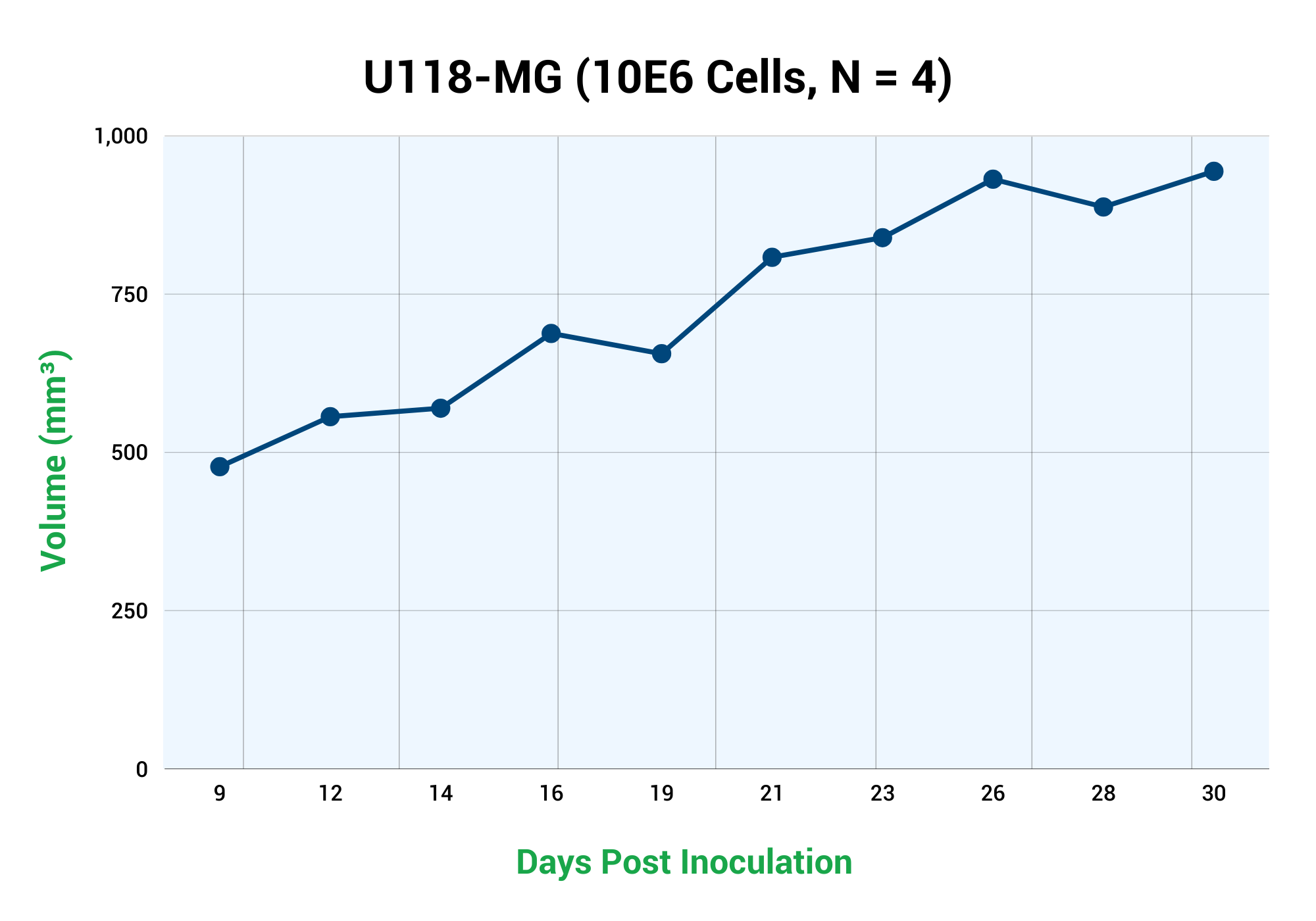About U118-MG
The U-188 MG cell line was derived in 1966 from a tumor sample obtained from a 55-year-old male patient. These cells are notable for their capacity to form colonies in soft agar without requiring anchorage. The U-188 MG cell line has been extensively utilized in research endeavors to unravel the molecular mechanisms underlying tumor development. U-188 MG cells express specific markers typically found in glial cells, such as GFAP (glial fibrillary acidic protein) and S100. Additionally, they exhibit a positive mutation in the epidermal growth factor receptor (EGFR), a key protein involved in signaling pathways associated with tumor development and progression.
The U-188 MG cell line is also employed as a valuable screening tool in preclinical studies for the development of anti-cancer therapies. Researchers utilize this cell line to evaluate the efficacy and potential side effects of various treatment modalities. Notably, U-188 MG cells have exhibited sensitivity to a combination therapy involving metformin and simvastatin, demonstrating the potential of these drugs in combating cancer.
U118-MG Tumor Kinetics in the SRG™ Rat

When implanted in SRG rats, the U-188 MG cell line produces tumors that are vascularized and exhibit a firm and solid consistency. This tumor model provides researchers with an opportunity to investigate the behavior and response of U-188 MG cells in an in vivo setting, particularly within the context of the tumor microenvironment and potential interactions with the immune system.
Products & Services
Xenograft Efficacy Studies
Includes collection of blood, tissues & tumor for ADME, PK/PD and analysis.
(Bi)weekly Tumor Sampling
Via fine needle aspiration (FNA). For longitudinal evaluation of drug exposure, histology and gene expression.
OncoRats
Cutting edge models optimized for engraftment.
Get help with your research by scheduling a call with Hera.
References (MLA):
- Fong, Jason T., et al. “Alternative Signaling Pathways as Potential Therapeutic Targets for Overcoming EGFR and C-MET Inhibitor Resistance in Non-Small Cell Lung Cancer.” PLOS ONE, Nov. 2013, journals.plos.org/plosone/article?id=10.1371%2Fjournal.pone.0078398.
- Mahan, Margaret, et al. “Glial Fibrillary Acidic Protein (GFAP) Outperforms S100 Calcium-Binding Protein B (S100B) and Ubiquitin C-Terminal Hydrolase L1 (UCH-L1) as Predictor for Positive Computed Tomography of the Head in Trauma Subjects.” Science Direct, 1 May 2019, www.sciencedirect.com/science/article/abs/pii/S1878875019311659?via%3Dihub.

